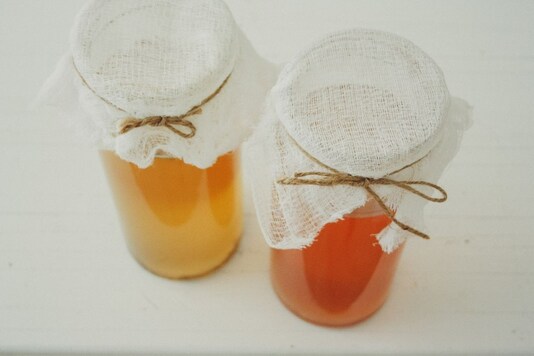Do you know what kombucha tea is? It is a fermented tea which is rich in probiotics. The tea is light effervescently and people consume it for its health benefits.
Researchers have taken inspiration from the material used to ferment kombucha tea called kombucha mother to produce functional materials.
The invention has been made by researchers from the Massachusetts Institute of Technology (MIT) and Imperial College London. They were able to create cellulose embedded with enzymes, reported Phys.Org
The enzyme-embedded cellulose can sense environmental pollutants. It also showed the yeast can be incorporated directly into the material which can create living materials that can be used in the formation of packaging materials that can detect damage. It could also be used to purify water.
The senior authors of this new research are Timothy Lu and Tom Ellis. While Timoty is an associate professor of biological engineering along with electrical engineering and computer science, Tom teaches bioengineering at Imperial College London.
Apart from them, lead authors of this new research paper are Tzu-Chieh Tang, an MIT graduate student and Charlie Gilbert who is a postdoc researcher at Cambridge University.
In a bid to create a microbe population similar to that of the kombucha mother, these researchers modified a strain of laboratory yeast called Saccharomyces cerevisiae at MIT.
Meanwhile, the researchers at Imperial College London extracted the bacteria Komagataeibacter rhaeticus from the kombucha mother.
The yeast developed at MIT was combined with the bacteria extracted at Imperial College London.
The resulting mixture had the properties of both the yeast and the bacteria. Large scale quantities of tough cellulose were produced by the bacteria which could serve as a scaffold while the lab yeast could be programmed to perform any function that it could perform including breaking down the pollutants if it detects them.
Tzu-Chieh said that almost anyone can do it on their own in their kitchen using a Syn-SCOBY mother, tea and sugar. A Syn-SCOBY (symbiotic culture of bacteria and yeast) was created by researchers which could sense the environmental pollutant called estradiol.
They were also able to create a Syn-SCOBY which could glow when illuminated with blue light.
Future plans of the researchers involve creating customised home-growing water filters or other materials for the use of people.
According to Tzu-Chieh, the system as compared to E. coli is very cheap and easy to make in larger quantities.
The finding of this research has been published by the peer-reviewed journal Nature Materials.
Previously, the lab of Timothy had used E.coli to create biofilms that were embedded with materials such as gold nanowires.
